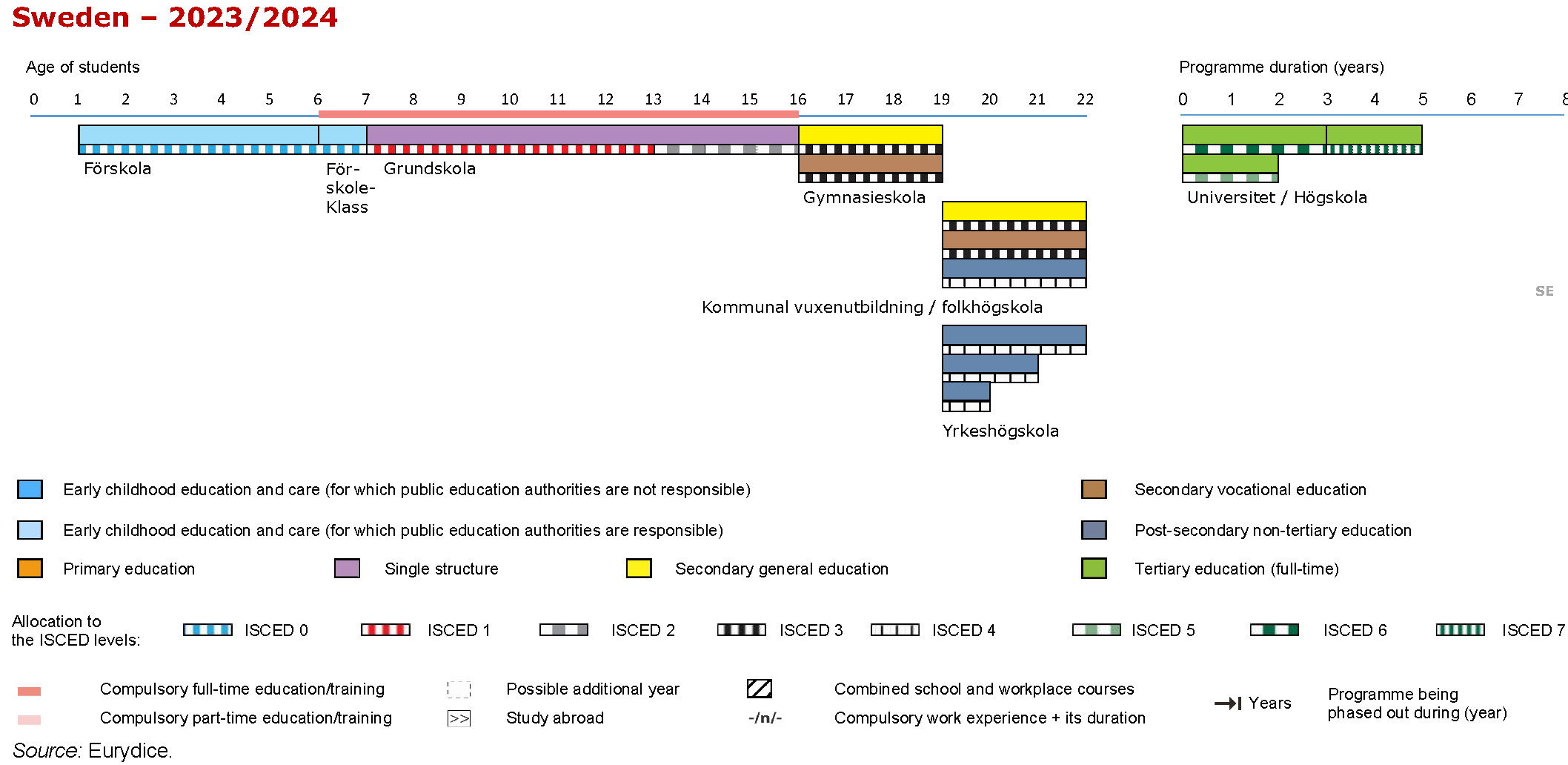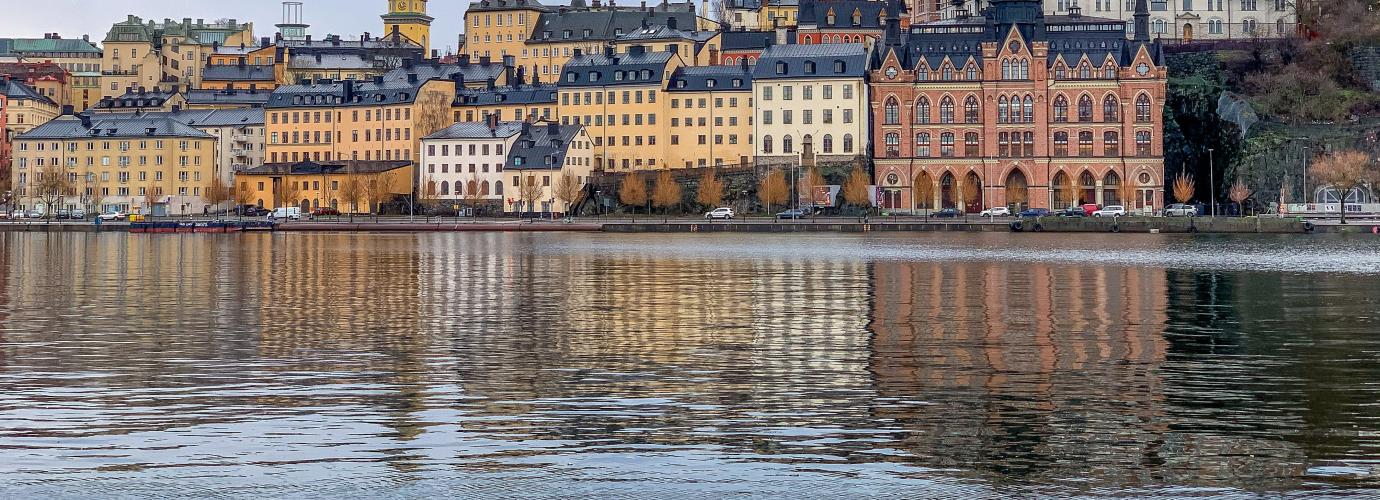Key Features of the Education System
Almost half of the Swedish population is involved in some forms of organised education. All education, from preschool class to higher education, is free of charge. Sweden has among the highest public spending on education relative to GDP in the EU.
A Decentralised Education System
Sweden has a decentralised education system, steered by goals and learning outcomes defined at central level. The government has the overall responsibility and sets the framework for education at all levels.
Municipalities (kommuner) in Sweden are responsible for organising education within:
- preschool (förskola)
- preschool class (förskoleklass)
- compulsory school (grundskola)
- upper secondary school (gymnasieskola)
- municipal adult education (kommunal vuxenutbildning, Komvux)
- Swedish tuition for immigrants (svenskaundervisning för invandrare, sfi)
- leisure-time centres (fritidshem)
The major part of school funding on those levels, including grant-aided independent schools (fristående skolor), comes from municipal tax revenues. Grant-aided independent schools are open to all and follow the same curricula as municipal schools do.
Higher education is provided by state universities (universitet) and state university colleges (högskolor) as well as by private institutions. Some of the private higher education institutions receive state subsidies.
Higher vocational education (yrkeshögskolan) is provided by state universities, state university colleges, municipalities, county councils and independent education providers. Every year, the Swedish National Agency for Higher Vocational Education (Myndigheten för yrkeshögskolan) calls for applications from education providers who want their education programmes to be part of the Swedish higher vocational education. Approved applications are valid for 2-5 education rounds, after which the provider has to hand in a new application.
Focus on Lifelong Learning
An overall aim of the education system in Sweden is to strengthen the students' foundations for lifelong learning. This is for example expressed through the curricula for compulsory and upper secondary school.
Sweden has a comprehensive system of adult education consisting of municipal and liberal adult education (folkbildning). Higher education and higher vocational education are free of charge and Swedish citizens are entitled to post-secondary student aid (studiemedel) until the year they turn 60. The study support system is equal for all and principally granted independently of parents' or family's financial situation.
The Teaching Profession
The current teacher education programmes in Sweden include four different professional degrees:
- a degree in preschool education
- a degree in primary school education
- a degree in subject education
- a degree in vocational education
The teaching profession has for many years struggled with declining status. The government has during the last years initiated several reforms to improve the status of the teaching profession and to increase the number of applicants to the teacher education programmes.
Stages of the Education System
The preschool class (förskoleklass) is since 2018 compulsory for all children from the year that they turn six. The Compulsory school (grundskola) then begins at the age of seven and ends at the age of 16. Preschool (förskola) is heavily subsidised and available from about the age of one. More than 90 percent of the children attend preschool.
Upper secondary school (gymnasieskola) consists of 18 national programmes and five introductory programmes (introduktionsprogram) for students who are not eligible for a national programme. Among the national programmes, there are 12 vocational programmes (yrkesprogram) and six higher education preparatory programmes (högskoleförberedande program). Students usually start upper secondary school at the age of 16 and complete their upper secondary studies at the age of 19.
Students that have not completed upper secondary school are able to attend municipal adult education (kommunal vuxenutbildning, Komvux) or folk high schools (folkhögskola). Students that have completed upper secondary school are, depending on their choice of upper secondary national programme and courses within the framework of individual options, also able to apply for universities (universitet), university colleges (högskola) and/or higher vocational education (yrkeshögskola).
Mainly as a result of the Bologna process, higher education in Sweden follows a three-cycle structure. First and second cycle education is referred to as undergraduate education and the third cycle as postgraduate education.
For further information, please consult the introduction articles of: Organisation and Governance and of each educational level: Early Childhood Education and Care, Single-Structure Primary and Lower Secondary Education, Secondary Education (or Upper Secondary Education) and Post-Secondary Non-Tertiary Education, Higher Education and Adult Education and Training.
For information on recently adopted or planned reforms and policy measures, please consult topic Ongoing Reforms and Policy Developments.
Structure of the National Education System

Useful Links
The Swedish National Agency for Education
The Swedish Council for Higher Education
The Swedish Higher Education Authority
The Swedish National Agency for Higher Vocational Education
The Swedish National Council of Adult Education

